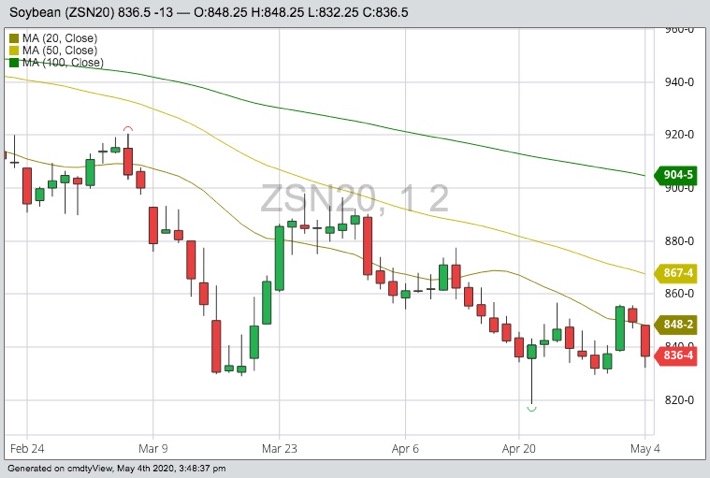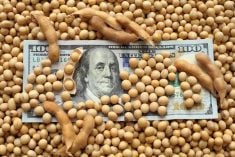Chicago | Reuters — Chicago soybean and corn futures slid on Monday as rising tensions between Washington and Beijing raised concern about further demand risk, on top of coronavirus disruptions to biofuel and livestock feed markets.
Favourable crop weather also weighed on prices as planting advanced in the U.S. Midwest while rain across Europe looks set to reach Russia’s crucial southern export zone this week. But Chicago Board of Trade wheat futures were able to shrug off that weakness in a late-session spurt of technical buying, traders said.
Read Also

U.S. grains: Soy hits four-month high on hopes for China trade deal
U.S. soybean futures jumped to their highest level in more than four months on Monday on hopes that China will resume buying American supplies after President Donald Trump said the countries were set to reach a trade deal during his trip to Asia this week.
Equities and oil prices fell on Monday as a U.S.-China spat over the coronavirus outbreak fueled fears of a new trade war, only months after the world’s two largest economies signed an agreement to defuse a tariff battle.
The most active soybean contract on the Chicago Board of Trade settled at $8.36-1/2 a bushel, down 13 cents (all figures US$).
Corn closed the day down three cents at $3.15-1/2 per bushel, after trading near a 10-1/2 year low of $3.09 struck two weeks ago. CBOT wheat settled up three cents at $5.19-1/2 per bushel.
U.S. President Donald Trump said on Thursday the Phase One trade deal with China was now of secondary importance to the coronavirus outbreak and threatened new tariffs over the pandemic.
Agriculture was a key part of the trade pact signed in January, raising hopes that China, the world’s biggest soybean importer, would ramp up purchases of U.S. supplies.
“We really need to see an improved export program in soybeans, and without China it’s going to be pretty difficult to do,” said Joe Vaclavik, president of Standard Grain. “We’ve seen China buy some beans the last couple weeks. If this thing sours, it’s not a good situation.”
The COVID-19 pandemic has already dented grain prices by shredding demand for corn-based ethanol biofuel and threatening to curb consumption of livestock feed after the closure of some meat factories.
Meanwhile, fair weather across the U.S. Midwest has analysts predicting planting ahead of schedule.
“The vast majority are already close to being done — corn and beans. Our guys in Minnesota, parts of the Dakotas, they’re wrapped up,” said Mark Schultz, chief analyst at Northstar Commodity.
Rain relief in Europe added pressure to U.S. wheat futures, though long-term dryness across the continent and into the Black Sea limited downward pressure. Concerns about underlying dryness in parts of the U.S. Southern plains may also be supporting the market.
— Reporting for Reuters by Christopher Walljasper; additional reporting by P.J. Huffstutter in Chicago, Gus Trompiz in Paris and Naveen Thukral in Singapore.












